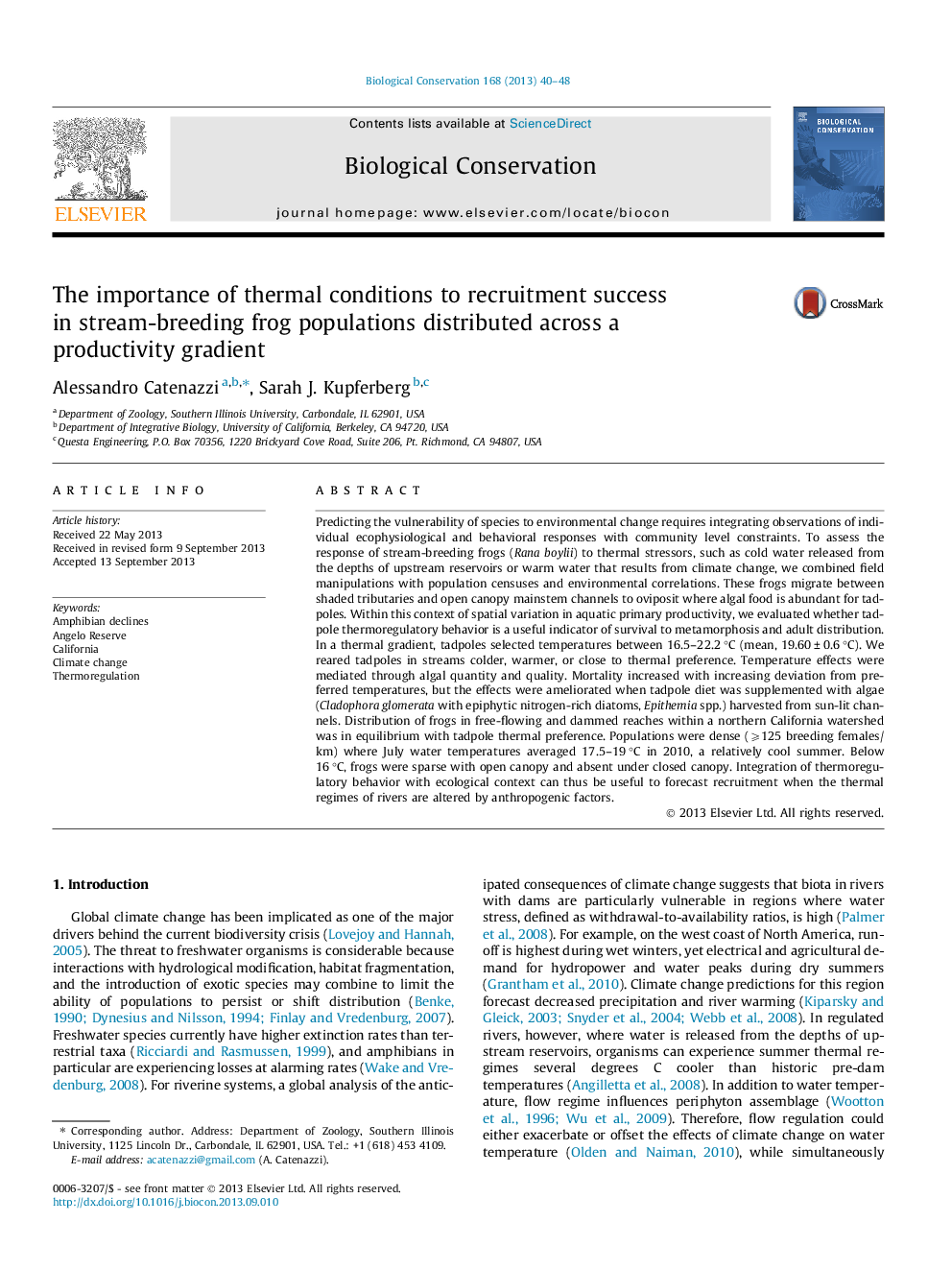| Article ID | Journal | Published Year | Pages | File Type |
|---|---|---|---|---|
| 6300337 | Biological Conservation | 2013 | 9 Pages |
â¢Thermal preference of tadpoles can predict recruitment success for Foothill yellow legged frogs, Rana boylii.â¢Adult frog populations were most abundant where summer water temperatures matched tadpole preference.â¢When dams release water colder than tadpole preference larval survival decreases, but a nitrogen-rich diet lessens the impact.â¢Cool summer temperatures downstream of dams causes frog distribution to shift into less productive shaded tributaries.â¢Knowledge of thermal tolerance integrated with ecological context is needed to forecast species' response to climate change.
Predicting the vulnerability of species to environmental change requires integrating observations of individual ecophysiological and behavioral responses with community level constraints. To assess the response of stream-breeding frogs (Rana boylii) to thermal stressors, such as cold water released from the depths of upstream reservoirs or warm water that results from climate change, we combined field manipulations with population censuses and environmental correlations. These frogs migrate between shaded tributaries and open canopy mainstem channels to oviposit where algal food is abundant for tadpoles. Within this context of spatial variation in aquatic primary productivity, we evaluated whether tadpole thermoregulatory behavior is a useful indicator of survival to metamorphosis and adult distribution. In a thermal gradient, tadpoles selected temperatures between 16.5-22.2 °C (mean, 19.60 ± 0.6 °C). We reared tadpoles in streams colder, warmer, or close to thermal preference. Temperature effects were mediated through algal quantity and quality. Mortality increased with increasing deviation from preferred temperatures, but the effects were ameliorated when tadpole diet was supplemented with algae (Cladophora glomerata with epiphytic nitrogen-rich diatoms, Epithemia spp.) harvested from sun-lit channels. Distribution of frogs in free-flowing and dammed reaches within a northern California watershed was in equilibrium with tadpole thermal preference. Populations were dense (⩾125 breeding females/km) where July water temperatures averaged 17.5-19 °C in 2010, a relatively cool summer. Below 16 °C, frogs were sparse with open canopy and absent under closed canopy. Integration of thermoregulatory behavior with ecological context can thus be useful to forecast recruitment when the thermal regimes of rivers are altered by anthropogenic factors.
